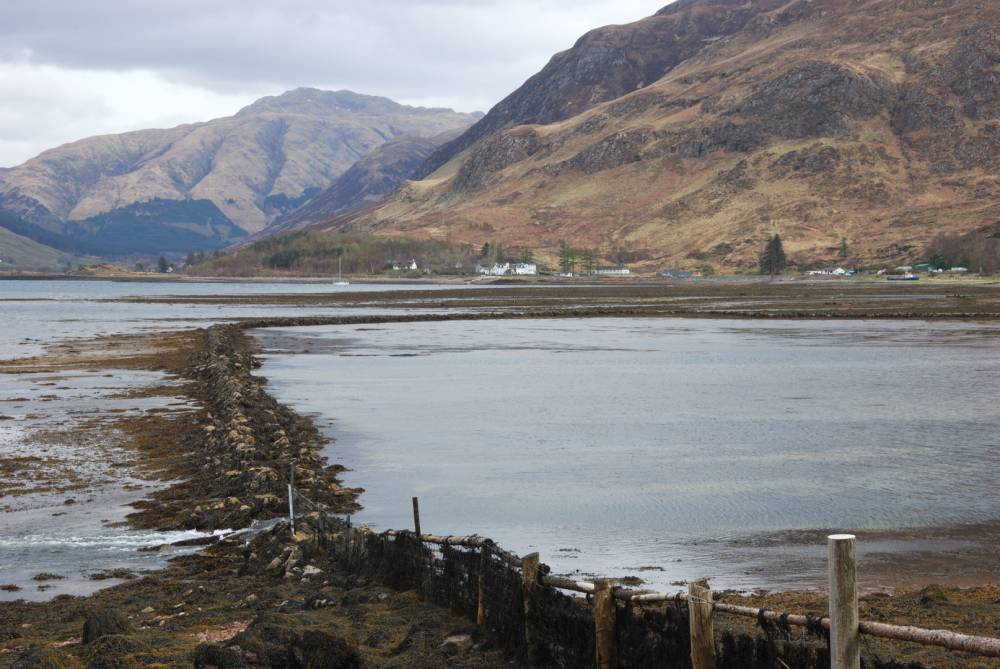Cairidh fish traps
CC BY-NC, © Màrtainn MacDhòmhnaill
Cairidh fish traps
"There are places along the west coast where, when the tide is out, you can see stone curved walls stretching out across a sandy bay. This structure is known as a ‘cairidh’ and was used to help catch fish. The idea was that as the tide went out, fish would be trapped by these walls and be left stranded in the shallow water or on the sand, where they would be easy to gather. Some think that the original walls may have been taller or had sticks and a net attached above. You can see cairidh at Applecross Bay and in the village of Camusteel, as well as at the head of Loch Torridon at Annat.
"Only once within the last 30 years do I remember actually seeing a shoal of fish come in and be trapped by the cairidh at Fassaig in Torridon. I think they were mackerel and some locals collected some for supper in buckets from the shore. Nowadays most of the stone wall tends to be covered in mussels and limpets. There are also a lot less fish to be seen. In the 1970s and 80s it was not uncommon to return home with a rowing boat full of fish, caught in only a few hours of fishing using lines and darrow hooks trailed in the water. Lots of gutting was then required but they provided plenty of tasty meals , especially with croft grown tatties on the plate too. Today there may be more seals, otters and other wildlife also enjoying catching what fish are available."
As told by Anne MacRae, resident of Torridon
More information on visiting the area can be found here.
